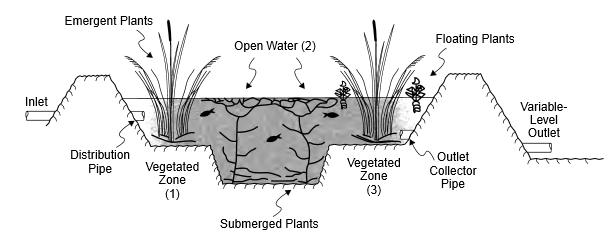Team:TU-Munich/Project/Phytoremediation
From 2013.igem.org
Phytoremediation
What it´s all about
As industrialization reached ever more parts of the globe throughout the last decades the standard of living increased drastically around the world. However nothing comes without a price and the toll not only we but our children and grandchildren have to pay for our luxury is a polluted environment which will someday cloud all the great modern comforts of our time.
Today a great variety of science and technology is eager to protect the environment from further harm and reverse the damage already done. Of these technologies bioremediation, and phytoremediation in particular, seems to be the most promising one as it tries to help nature help itself.
Bioremediation was defined as "the process of judiciously exploiting biological processes to minimize an unwanted environmental impact; usually it is the removal of a contaminant form the biosphere." http://onlinelibrary.wiley.com/doi/10.1002/0471238961.0209151816180914.a01/abstract Prince, 2000 Phytoremediation is the concept of removing these pollutans either directly by plants themselves or by specialized bacteria living in a symbiosis with plants.
There is a multitude of different pollutants that are primary targets for remediation such as Polychlorinated biphenyls (PCBs), insecticides such as dichlorodiphenyltrichloroethane (DDT), heavy metals such as cadmius or mercury or phrmaceutical products such as diclofenac or ethynyl estradiol .
Phytoremediation vs. Bioremediation
So why did we choose Phytoremediation over the approach of classical Bioremediation using bacteria like so many iGEM-teams do?
For this there are several reasons. For one we thought that the overall applicability of plants is much higher than of bacteria. Provided a sufficient saftey mechanism transgenic plants can be deployed almost everywhere. All they need is light and they will sustain themselves. Bacteria on the other hand are much harder to contain and are generally more expensive than plant systems.
Costs of different techniques for soil remediation | ||
| Type of treatment | Range of costs, $/ton | |
|---|---|---|
| Phytoremediation | 10-35 | |
| In situ bioremediation | 50-150 | |
| Soil venting | 20-220 | |
| Indirect thermal treatment | 120-300 | |
| Soil washing | 80-200 | |
| Solidification/stabilization | 240-340 | |
| Solvent extraction | 360-460 | |
| Incineration | 200-1500 | |
Considering all these factors we decided that Phytoremediation was the way to go. And thanks to all the fantastic work of other iGEM-teams in previous years we had the possibility to choose from a wide variety of existing biodegradation bricks!
Our main goal in this project was to use the excellent existing bricks and build up on the work of previous teams but by establishing a completely new chassis we wanted to go one step further.
Previous Work in iGEM and the Choice of a suitable Chassis
As we established our idea we investigated several remediation projects done by previous teams to look for ways to improve them or even come up with a totally new approach.
As we saw many interesting projects like those of [http://2012.igem-bielefeld.de/index.php Bielefeld 2012] and Imperial College London 2010 we noticed that only very few phytoremediation projects were ever part of the iGEM competition. Notably we were very interested in the algae project of Bilkent UNAM Turkey.
But seeing those great projects we allways felt that there has to be a more suitable chassis for remediation. Finally we stumbled upon a newly established model organism Physcomitrella patens. As noone in our team ever worked with moss (or with plants for that matter) we first had to find out more about this plant. Thankfully the website of [http://www.plant-biotech.net/ Prof. Reski] cited all we need to know about our system of choice. We were quickly convinced that this plant should be introduced to the iGEM competition.
Previous Work (some examples)
- MIT 2007 https://2007.igem.org/MIT
--> Filtering Mercury in E.coli
- Bilkent UNAM Turkey (https://2011.igem.org/Team:Bilkent_UNAM_Turkey/Project_Description)
--> Degrading TNT in Algae
- Bielefeld 2012 (Laccase)
--> Degrading Hormones in different organisms -> Cooperation with LMU
- Collaboration with Paris-Saclay and Dundee
Choice of Chassis:
- water should be natural environment
- autotrophic
- easy handling
Constructed Wetlands as a large-scale application of Phytoremediation
In the last decades Phytoremediation made the transition from a solely scientific approach to an industrial scale water treatment technique. Today large amounts of water are treated through constructed wetlands as it poses one of the simplest and most cost-effective ways to treat sewage-waters either on their own or in symbiosis with a traditional treatment plant.
How do they work and why do we need them?
Natural wetlands, as well as constructed ones, are systems in which plants and microorganisms form complex biotopes capable of filtering, degrading or inactivating various substances in the water. The wetland, slowing the speed of the passing water, can trap suspended solids in the vegetation which also accumulates pollutants by absorbing them. As these wetlands are a perfect habitat for microorganisms various degredation processes take place ridding the water from a variety of pollutants.
Higher environmental standards in first world countries as well as the growing industrialization have led to a skyrocketing demand in sewage water treatment. The capacities of traditional treatment systems have shown to be ineffective and too expensive. Constructed wetlands pose a real alternative to conventional technologies as they are not only reliable and cost-effective but the most natural and environmental friendly way of cleaning water. They leave no waste behind, are self-sustaining and have no demand for artificial energy. Other than most other environmental measurements constructed wetlands are very attractive for businesses as they are cheap alternatives to existing systems rather than costly additions.
References:
- http://onlinelibrary.wiley.com/doi/10.1002/0471238961.0209151816180914.a01/abstract Prince, 2000 Prince, R. C. (2000). Bioremediation. Kirk-Othmer Encyclopedia of Chemical Technology.
 "
"





AutoAnnotator:
Follow us:
Address:
iGEM Team TU-Munich
Emil-Erlenmeyer-Forum 5
85354 Freising, Germany
Email: igem@wzw.tum.de
Phone: +49 8161 71-4351